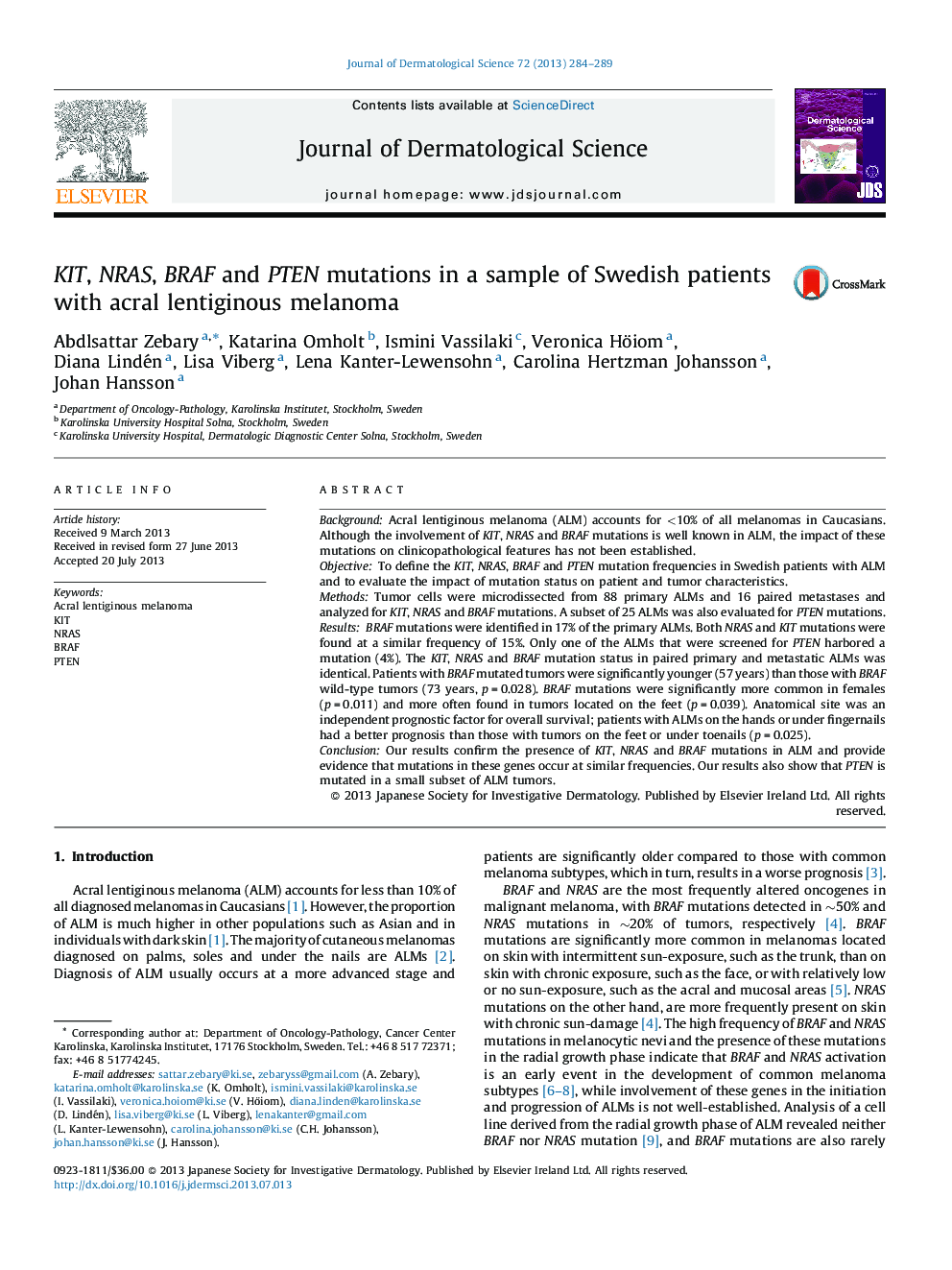| Article ID | Journal | Published Year | Pages | File Type |
|---|---|---|---|---|
| 3212918 | Journal of Dermatological Science | 2013 | 6 Pages |
BackgroundAcral lentiginous melanoma (ALM) accounts for <10% of all melanomas in Caucasians. Although the involvement of KIT, NRAS and BRAF mutations is well known in ALM, the impact of these mutations on clinicopathological features has not been established.ObjectiveTo define the KIT, NRAS, BRAF and PTEN mutation frequencies in Swedish patients with ALM and to evaluate the impact of mutation status on patient and tumor characteristics.MethodsTumor cells were microdissected from 88 primary ALMs and 16 paired metastases and analyzed for KIT, NRAS and BRAF mutations. A subset of 25 ALMs was also evaluated for PTEN mutations.ResultsBRAF mutations were identified in 17% of the primary ALMs. Both NRAS and KIT mutations were found at a similar frequency of 15%. Only one of the ALMs that were screened for PTEN harbored a mutation (4%). The KIT, NRAS and BRAF mutation status in paired primary and metastatic ALMs was identical. Patients with BRAF mutated tumors were significantly younger (57 years) than those with BRAF wild-type tumors (73 years, p = 0.028). BRAF mutations were significantly more common in females (p = 0.011) and more often found in tumors located on the feet (p = 0.039). Anatomical site was an independent prognostic factor for overall survival; patients with ALMs on the hands or under fingernails had a better prognosis than those with tumors on the feet or under toenails (p = 0.025).ConclusionOur results confirm the presence of KIT, NRAS and BRAF mutations in ALM and provide evidence that mutations in these genes occur at similar frequencies. Our results also show that PTEN is mutated in a small subset of ALM tumors.
